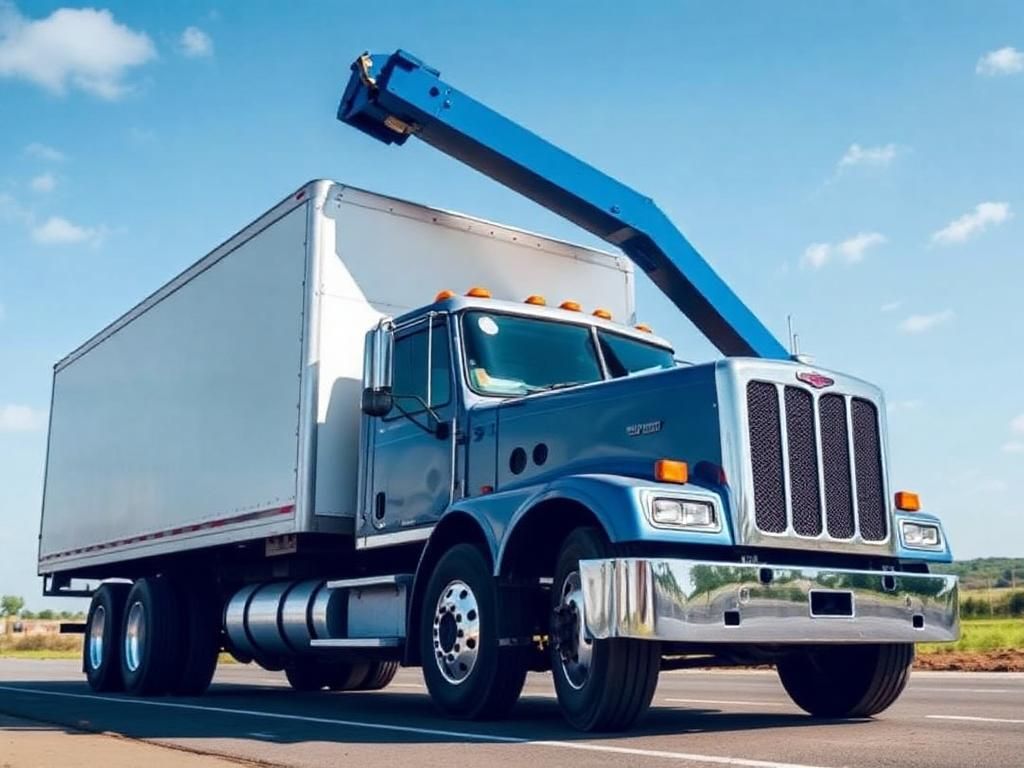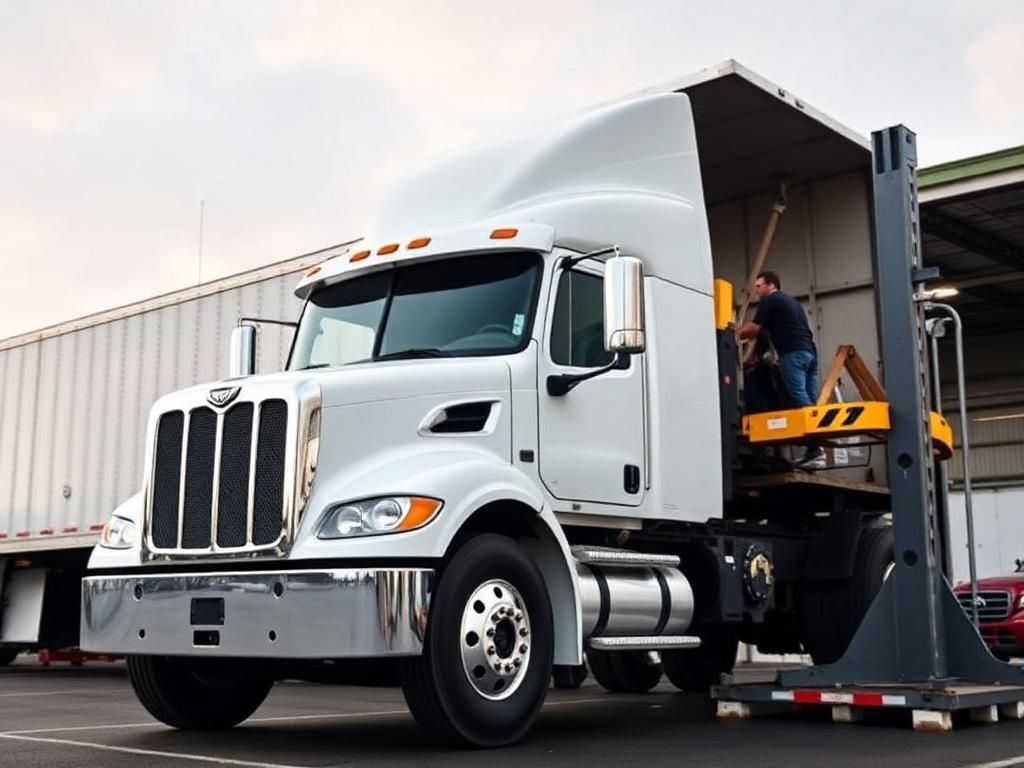Lifting a truck has become a popular trend among vehicle enthusiasts, providing both aesthetic appeal and enhanced functionality. For those looking to elevate their truck’s capabilities—whether for off-road adventures or simply to stand out on the road—understanding the associated costs is essential. In this article, we will explore the various factors impacting the price of lifting a truck, break down the costs involved, and provide practical tips for budgeting your project. From body lifts to suspension lifts, knowing how much it costs to lift a truck will better equip you to make informed decisions that align with your goals.
Understanding Truck Lifting
What is Truck Lifting?
Truck lifting refers to modifying a truck’s height to increase its clearance from the ground. This modification can be executed through various methods, the most common being body lifts and suspension lifts. A body lift typically raises the truck’s body, allowing for larger tires without altering the suspension’s geometry. In contrast, a suspension lift elevates the truck’s suspension system, enhancing ride quality and off-road performance.
Benefits of Lifting a Truck
Aside from the striking appearance that lifted trucks provide, several benefits make this modification attractive:
– Improved off-road capability: A lifted truck can navigate rough terrains with greater ease.
– Enhanced aesthetics: Many truck owners appreciate the rugged look of a lifted vehicle, making it a popular choice for customization.
– Increased ground clearance: More clearance allows for larger tires and improved performance on uneven surfaces.
– Potential for larger tires: Lifting your truck typically accommodates oversized tires, which can further improve traction and off-road capability.
Factors Influencing the Cost of Lifting a Truck
Type of Lift
The type of lift you choose plays a significant role in determining costs:
– Body Lift Kits:
– Body lifts are less complex and usually consist of spacers that raise the body from the frame.
– Cost range: Generally falls between $100 and $2,000, depending on brand and features.
– Suspension Lift Kits:
– This method involves modifying the suspension components, providing better handling and performance.
– Cost range: Typically ranges from $1,000 to $10,000, influenced by the kit’s complexity and the truck’s model.
Complexity of Installation
Installation plays an equally crucial role in overall expenses, as costs can vary based on whether you opt for DIY or professional help:
– DIY vs. Professional Installation:
– DIY installations can save you money, with costs ranging from $0 to $500 for tools and components if you already have some equipment.
– Professional installation could range between $500 to $3,000, depending on labor rates and the complexity of the lift.
– Time involved in installation:
– DIY installations may take several hours to a couple of days, while professionals might complete the job in a matter of hours depending on their experience and the lift type.

Truck Model and Year
Costs can fluctuate based on the truck’s make and model, as some vehicles may require more specialized kits or components. For instance, a popular model like the Ford F-150 may have more available options, while a rarer make could face higher expenses due to scarcity.
Breakdown of Costs
Parts and Equipment Costs
Several essential components are needed for lifting a truck:
– Lift kits: The main component determining lift height.
– Spacers: Can provide additional height in conjunction with lift kits.
– Other accessories: Upgraded shocks and sway bars may be necessary to accommodate the lift.
Labor Costs
When considering professional installation, be aware of the average hourly rates for mechanics, which usually range between $75 and $150. Depending on the complexity of the installation, total labor costs could rise significantly, sometimes reaching $3,000.
Additional Costs and Considerations
Beyond initial installation and parts, consider:
– Alignment adjustments: Alignments should be performed post-lift and typically cost between $75 – $150.
– New tires and wheels: Additional expenditures if larger tires are needed.
– Insurance implications: Some modifications may affect your insurance policy; consulting with your provider is crucial.
– Warranty considerations: Check how lifting a truck could potentially affect any existing warranties.
Average Cost Ranges
Low-End Lifts
Low-end lift kits, which offer basic options, usually range from $100 to $1,500. These lifts may not provide extensive performance enhancements but can visually elevate the truck.
Mid-Range Lifts

Mid-tier options typically cost between $1,500 and $4,500. These lifts often combine quality components and reputable brand names, providing a balance of performance and cost.
High-End Lifts
For those seeking high-end modifications, prices can soar between $4,500 and $10,000 or more. High-end kits may include advanced suspension technology, custom components, and increased durability.
Financing and Budgeting Tips
Planning Your Budget
To effectively budget for lifting your truck, consider the total costs associated with parts, labor, and additional expenses. Being thorough in your assessment will help prevent unexpected financial burdens.
Financing Options
If you’re concerned about upfront costs, various financing options exist for vehicle modifications:
– Loans specifically for vehicle modifications: Certain lenders offer specialized loans tailored for this purpose.
– Credit options: Credit cards may provide a solution, but interest rates could add to the cost over time.
– Building a savings plan: Gradually setting aside funds can help relieve financial pressure when it’s time to lift your truck.
Conclusion
In summary, understanding how much it costs to lift a truck involves more than just sourcing a lift kit. From evaluating the type of lift you desire to understanding installation costs and additional expenses, planning is essential. With careful consideration, you can enjoy both aesthetic and functional benefits while ensuring your budget stays intact.
FAQs
Is lifting a truck worth the cost?
Many truck owners find the benefits—like improved off-road capabilities and an eye-catching appearance—justify the expenses.
Can I lift my truck myself, or should I hire a professional?
While a DIY lift can save money, consider your mechanical skills and available tools. Professional installation can ensure safety and performance.
How does lifting affect ride quality and handling?
Some lifts improve handling, but others may compromise ride comfort. Testing different setups is crucial.
Will lifting my truck affect my warranty?
It could potentially void parts of your warranty, so always check with your dealer before modifying.
What are the legal considerations for lifting a truck?
Lifting must adhere to your local regulations regarding vehicle dimensions and safety standards.
| Lift Type | Cost Range | Features |
|---|---|---|
| Body Lift Kits | $100 – $2,000 | Increases height with spacers |
| Suspension Lift Kits | $1,000 – $10,000 | Modifies suspension for enhanced performance |
| Labor (DIY) | $0 – $500 | Tools and equipment costs |
| Labor (Professional) | $500 – $3,000 | Expert installation costs |
| Alignment Adjustments | $75 – $150 | Post-lift alignment |
Whether you’re drawn to the performance benefits or aesthetic improvements, understanding how much it costs to lift a truck is essential for moving forward with your project. Good luck on your lifting journey!